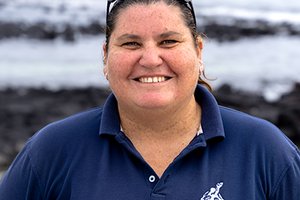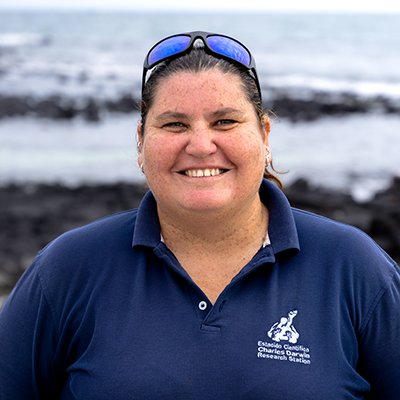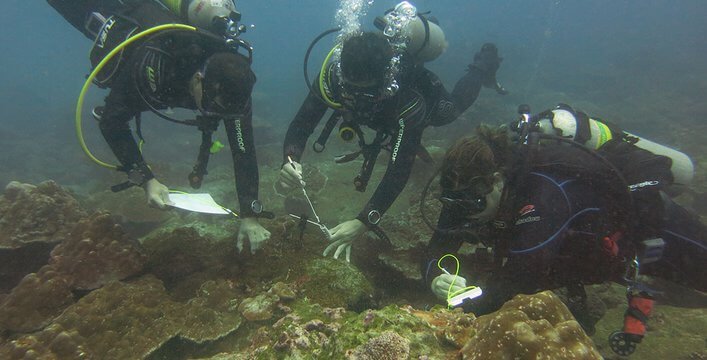
Written in collaboration with Geiner Golfin, Management of Natural Resources for Cocos Island.
An investigation was recently initiated in the Cocos Island National Park with the aims of minimizing the negative impacts on marine biodiversity in the Cocos Island National Park caused by non-native species, and of establishing protocols for prevention, early detection and rapid response. This investigation is conducted in collaboration with the Charles Darwin Foundation (CDF) on the Galapagos Islands and the Program of Invasive Marine Species, which started the investigation in 2012 in the Galapagos Marine Reserve (GMR). The project depends on the participation of the Galapagos National Park Directorate (GNPD), the Agency for Biosecurity for Galapagos (ABG), the Oceanographic Institute of the Navy (INOCAR), Port Authorities and the Smithsonian Environmental Research Center (SERC).
Dr. Inti Keith, the main researcher of non-native species in the Galapagos Islands, stated that “it is vital to expand the investigation to other marine protected areas in the Eastern Tropical Pacific, due to the extremely high connectivity that exists in this region and the climactic changes that are occurring. Non-native species can be introduced from different regions of the world in the hulls of ships and in ballast water (anthropogenic introduction) or can be dispersed naturally by oceanographic currents (natural arrival). The most serious issue is that non-native species can become invasive species by establishing, reproducing and expanding.”
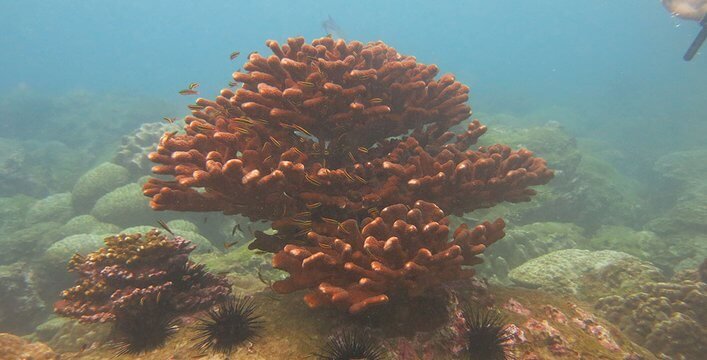
The introduction of non-native species has been identified as the second-most important reason for the loss of biodiversity worldwide, after habitat loss. Marine bioinvasions are recognized as a problem in all the world’s oceans. The amount of biological invasions have increased over the last decade, principally due to the accelerated propagation of species through the growth of global commerce, transport and tourism, which has allowed species to overcome natural barriers such as currents and temperature gradients that once prohibited their movement. Human beings have transported species for years (deliberately or accidentally) and some of these species have succeeded in establishing themselves, proliferating and causing large ecological, economical and health impacts.
“Oceanic islands are more prone to invasions by non-native species, due to the paucity of natural competitors and predators that control populations in their native ecosystem. Oceanic islands often have many ecological niches that have not been occupied due to the distance of colonizing populations, increasing the probability of a successful invasion. The geographical isolation of Cocos Island has limited natural migration of new species, allowing for the present species to evolve in absence of competitors and predators” explained Dr. Keith.
Geiner Golfin, Park Ranger and Marine Biologist in charge of the Management of Natural Resources Program, mentioned that “this is a new and exciting investigation that’s never been conducted in the Cocos National Park”. He stated that the research will allow the Park to increase their knowledge on how this marine ecosystem functions and how it is connected with other Marine Protected Areas (MPAs) in the region. It will also illustrate the connectivity in the Eastern Tropical Pacific (ETP) and how the biodiversity of this region must be protected. This research will facilitate the development of preventative and management guidelines in order to protect biodiversity locally as well as taking into account regional ecosystem services. The Cocos Island National Park is carrying out the necessary efforts to begin monitoring non-native species and work on prevention, early detection and rapid response protocols in collaboration with the Charles Darwin Foundation and the Marine Invasive Species Program.”
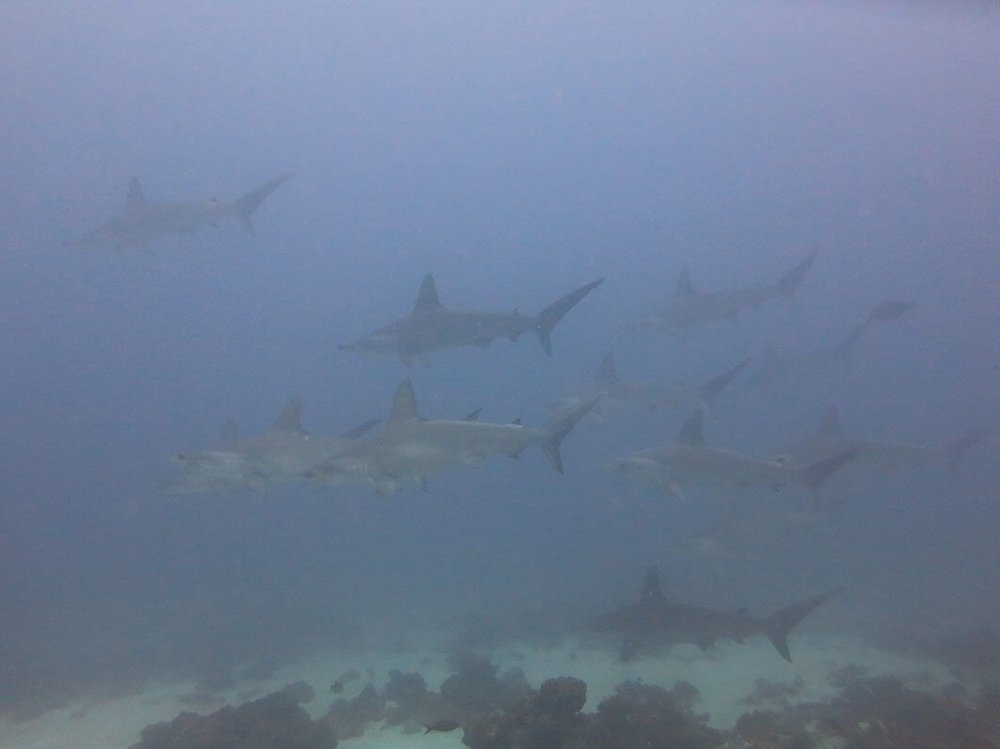
The investigation led by Dr. Keith completed its first expedition to Cocos Island National Park on the 12th of August, with the collaboration of co-researchers Macarena Parra (Charles Darwin Foundation), park rangers Roberto Cubero, Geiner Golfín and Keylor Morales, and Katharine Evans (Oceans Unlimited). Geiner Golfin said “it is very important to involve park rangers in this investigation, in order to build capacity and run a successful monitoring program that will provide the basis for strong management". The new protocols will be enforced and supported by the park rangers on the island.
During this initial stage of the investigation, subtidal monitoring protocols were followed using SCUBA in different dive sites around Cocos Island. Directed searches were carried out with a focus on non-native species and gathering baseline information in order to further study the connectivity that exists between the Galapagos Islands and Cocos Island. The depth range of dives was between 10 and 30 meters, and covered a variety of habitats including coral reefs, sandy, and rocky substrates. During the dives a number of species thought to be non-native to Cocos Island were identified. The next step is for scientists to research the list of species and determine the origin of these species in order to identify and classify each one correctly.
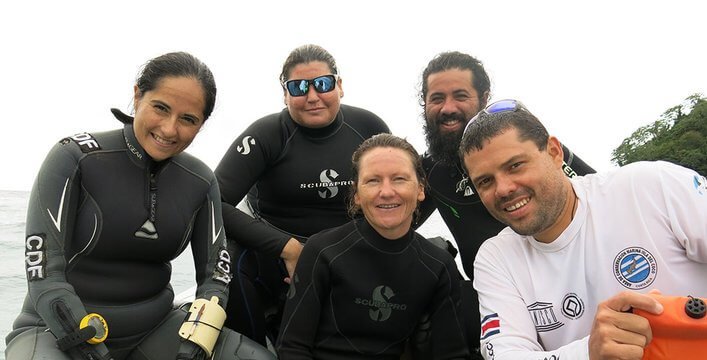
This research is in the initial stages and we are hoping to raise interest and find support to follow-up this new collaboration between the Charles Darwin Foundation and the Cocos Island National Park. This investigation started as an initiative within the The Eastern Tropical Pacific Marine Corridor (CMAR) framework, and there is a desire to extend the investigation to other protected areas in the region (Coiba Island in Panama, Malpelo Fauna and Flora Sanctuary and the Gorgona National Park in Colombia) in the near future. The four countries that are part of CMAR are Costa Rica, Panama, Colombia and Ecuador.
“It is a priority to establish which are high risk species for the region of the East Tropical Pacific to improve management plans for marine invasive species and biosecurity and hence protect the biodiversity of the region. Protocols for prevention, early detection, and rapid response together with risk evaluations and management strategies must be put in practice” explained Dr. Keith.
Contact:
Geiner Golfin: in charge of the Management of Natural Resources for Cocos Island. Telephone: 89109806 geiner.golfin@sinac.go.cr
Inti Keith: Senior Researcher – Marine Invasive Species Program, Charles Darwin Foundation, Galapagos Islands. inti.keith@fcdarwin.org.ec. Telephone +593 98 6261488 Skype: Inti.Keith79
Katharine Evans: Photography by Oceans Unlimited





